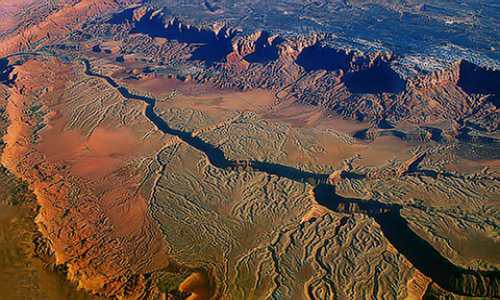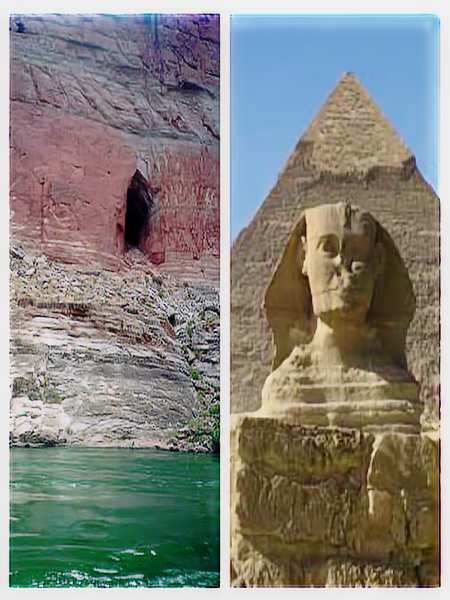Table of contents
In the April 5, 1909 edition of the Arizona Gazette, a headline blared with sensational claims: “Explorations in Grand Canyon: Remarkable finds indicate ancient people migrated from Orient.” This intriguing report detailed an expedition funded by the Smithsonian Institution, revealing what seemed like a treasure trove of artifacts within a hidden cavern deep in the Grand Canyon. The findings included tablets with hieroglyphics, copper weaponry, statues of Egyptian deities, and even mummies. Despite its captivating nature, the story has remained shrouded in controversy and skepticism.
The Mysterious Discovery
According to the 1909 article, the discovery was made in a cavern hewn from solid rock, high above the Colorado River. The expedition, backed by the prestigious Smithsonian Institution, uncovered a labyrinthine network of tunnels containing artifacts that suggested a significant cultural connection to ancient Egypt. This report quickly captured public imagination but left many questions unanswered.
The Smithsonian Institution, however, has disavowed any knowledge of such a discovery. Subsequent searches for the cavern yielded no results, further fueling skepticism about the story’s authenticity. Some experts, like researcher David Hatcher Childress, argue that the detailed account and prominent endorsement of the Smithsonian lend the story credibility, even if the artifacts themselves remain elusive.
The Hoax Hypothesis
The possibility of the article being a hoax cannot be ignored. Critics suggest that the sensational nature of the report, coupled with the lack of concrete evidence or follow-up research, casts doubt on its validity. The absence of corroborating evidence and the Smithsonian’s denial add weight to the argument that the story might have been a fabrication.
A Modern Exploration
In recent years, interest in the 1909 article has spurred renewed exploration efforts. In 1998, researcher Barry McEwen discovered the article while browsing through microfilms at the Phoenix Public Library. His curiosity about the article, combined with his background in sacred geometry and ancient knowledge, led him to investigate further.
McEwen’s research took him to the Grand Canyon, particularly to a location known as Isis Temple. According to his findings, Isis Temple, which is visible from the South Rim, is situated at an elevation of about 800 feet. McEwen’s investigation revealed that several cave entrances in the area appeared to be sealed or destroyed, raising questions about their purpose and the possibility of hidden artifacts.

Geographic and Mathematical Connections
McEwen’s investigation included exploring mathematical and geographic connections between Isis Temple and other ancient sites. He discovered intriguing alignments between Isis Temple and the Great Pyramid of Giza. His findings suggest that Isis Temple might be part of a global coordinate system used by ancient civilizations.
McEwen collaborated with other researchers, such as Michael Lawrence Morton, to explore these connections further. Morton’s research into the “Code of the Ancients” revealed that many ancient sites around the world, including the Great Pyramid and Isis Temple, are aligned according to a precise global coordinate system. This system includes mathematical constants, sacred geometry, and astronomical alignments.
The Role of Sacred Geometry
Sacred geometry, which encompasses the study of geometric shapes and their relationships to the cosmos, plays a crucial role in understanding these ancient alignments. McEwen and Morton’s research indicates that ancient civilizations might have used advanced geometric principles to determine the locations of their sacred sites. This theory proposes that ancient people possessed sophisticated knowledge of geometry and astronomy, which they applied in constructing their temples and monuments.
Unresolved Questions and Future Research
Despite the intriguing findings, many questions remain unresolved. The authenticity of the 1909 article and the existence of hidden artifacts in the Grand Canyon are still subjects of debate. The sealing of cave entrances and the geographical significance of Isis Temple continue to spark curiosity among researchers and explorers.
Future research may provide more clarity on these mysteries. Advances in technology, such as improved imaging techniques and more detailed archaeological surveys, could shed light on the true nature of the Grand Canyon’s hidden history. Until then, the story of the 1909 discovery remains a fascinating and enigmatic chapter in the quest to understand our ancient past.
Conclusion
The 1909 Arizona Gazette article about the Grand Canyon’s hidden artifacts remains a compelling mystery. While the possibility of a hoax exists, the detailed account and subsequent research into sacred geometry and ancient alignments suggest that there may be more to this story than initially believed. Whether the artifacts exist or not, the search for answers continues to capture the imagination of researchers and adventurers alike.

